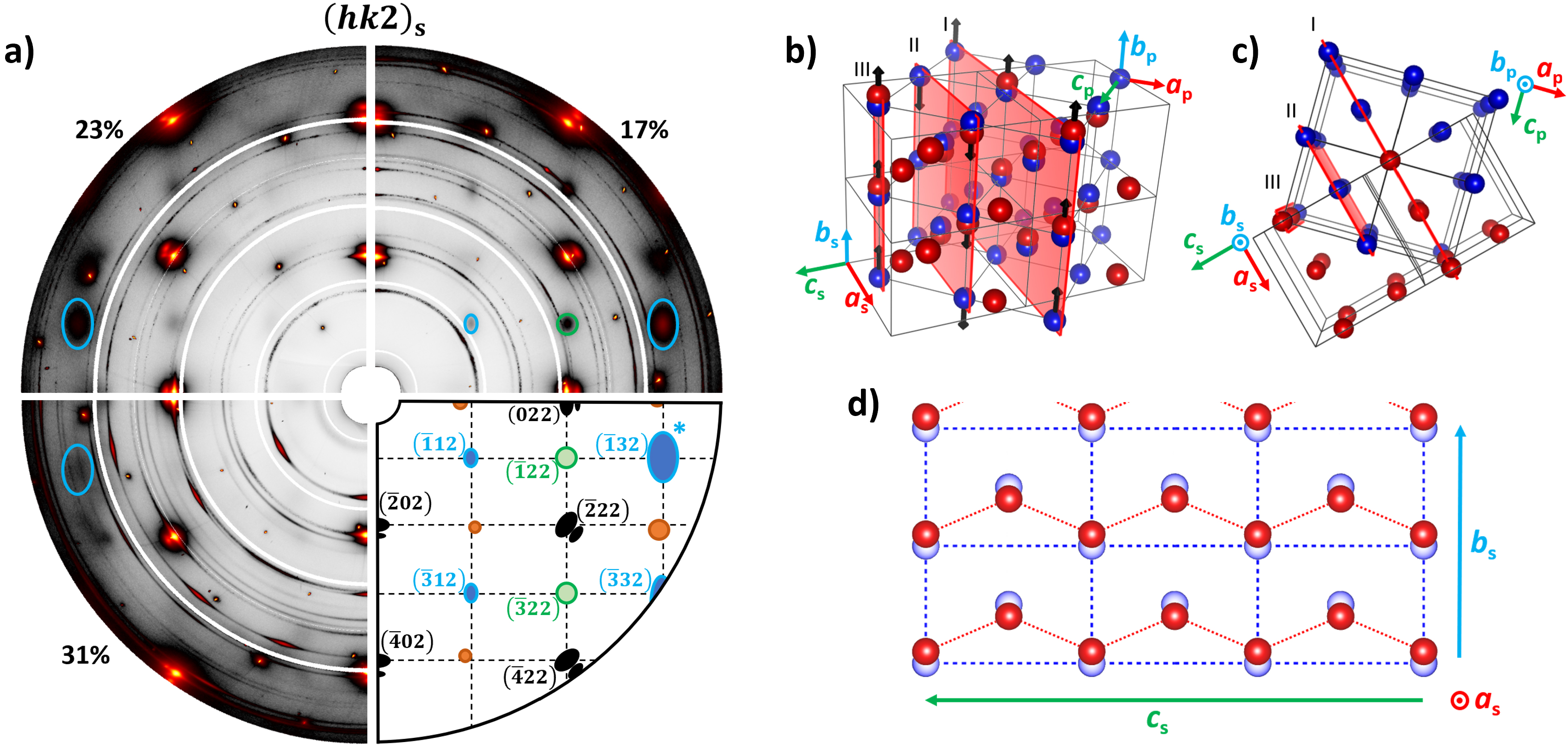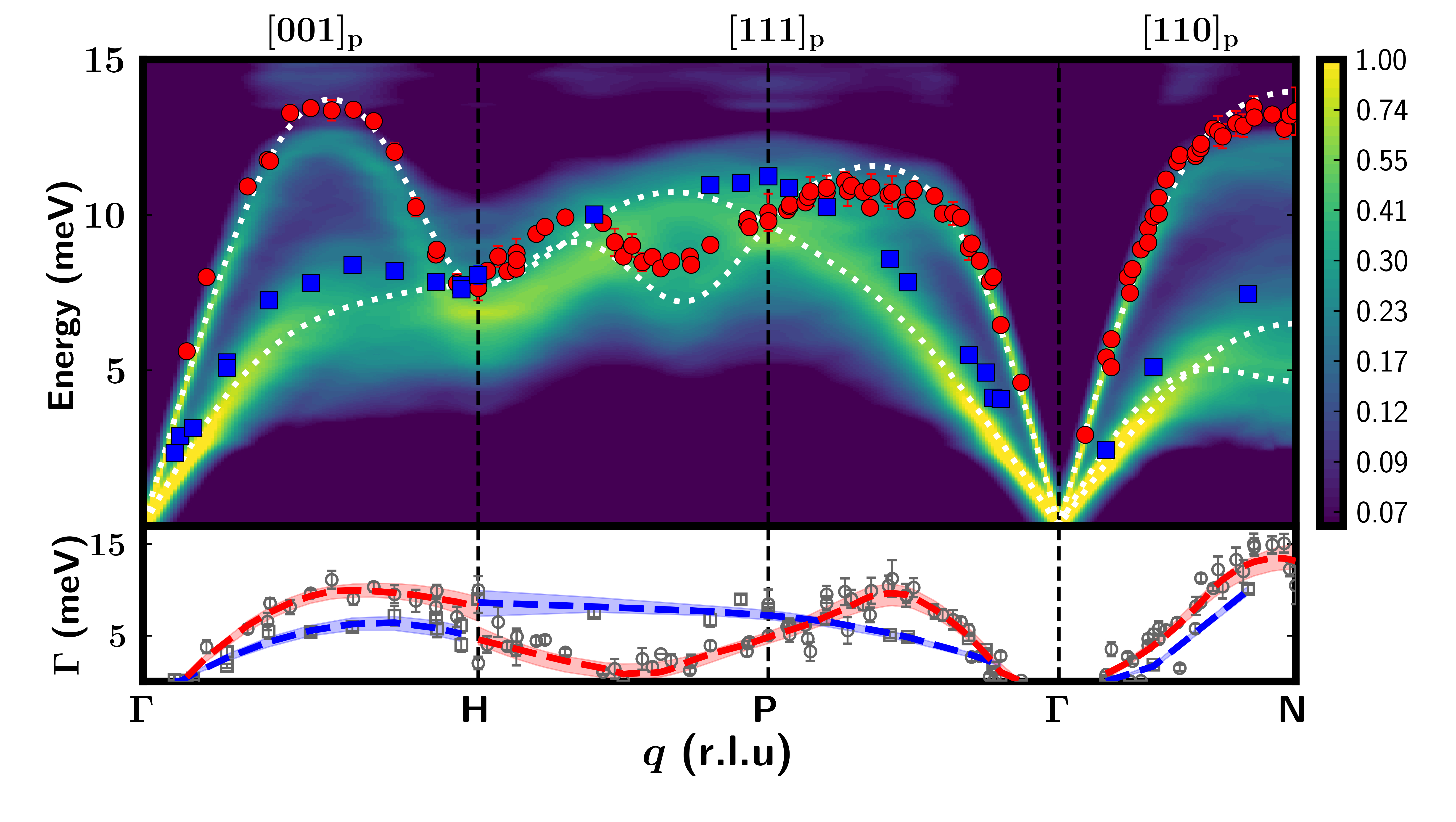- Home
- News
- Spotlight on Science
- Crystallographic...
Crystallographic conflict provides extraordinary phonon lifetime suppression
07-06-2021
Many material properties are associated with structural disorder that exhibits local periodicity or correlations. A new form of this phenomenon exhibiting strong disorder-phonon coupling has been shown to arise in response to crystallographic conflict, with dramatic phonon lifetime suppression.
In recent years there has been a rapidly growing understanding that, hidden within the globally periodic structures of many crystals, various forms of disorder may exist that could form ‘locally periodic’ states, which the language of classic crystallography fails to describe. Such phenomena are commonly referred to as ‘correlated disorder’ and in many functional materials, from leading ferroelectric and thermoelectric candidates to photovoltaic perovskites and ionic conductors, this correlated deviation from perfect periodicity plays a pivotal role in governing functionality. As such, understanding the role of disorder, and the correlations that exist within it, is one of the defining challenges for the development of future functional materials.
A key component in correlated disorder is the conflict between local and global symmetries. While there have been substantial investigations into conflicts created by charge, spin, molecular orientation etc., there are few systems that allow systematic studies into the effects of intrinsic crystallographic conflict. A team of researchers from the University of Bristol have exploited extensive diffuse X-ray scattering studies at beamline ID28 (Figure 1a) to study thin films of the pseudo-bcc U1-xMox alloy, in which the preferred symmetry of the majority basis (uranium) differs greatly from that of the global lattice it is arranged upon.

Fig. 1: a) Reciprocal space reconstructions of the (hk2)s plane. All three samples investigated are shown with relevant at. % Mo indicated. Reflections are categorised and indexed in the bottom right quadrant, parent Bragg peaks (black) and diffuse superstructure reflections from two different domains (blue/green). b) Orientational relationship between parent (blue) and superstructure (red) unit cells for one of six possible domains. All atoms in the “shear plane” (highlighted red) move collinearly with the direction of motion indicated by arrows on the plane edge. Alternate planes, demarcated by I, I, III, ... , move in antiphase. c) Top-down view showing the 45◦ relationship between the parent and superstructure. d) Schematic of the atomic motions in a “phonon plane.” Blue dashed and red dotted lines refer to interatomic bonding in the parent and superstructure unit cells, respectively.
The data show that the intrinsic crystallographic conflict created in the UMo system is resolved via a novel form of correlated displacive disorder, forming a short-range superstructure (Figure 1 b-d) that preserves the higher average symmetry while allowing a significant reduction in local symmetry. Furthermore, by combining grazing incidence inelastic X-ray scattering (GR-IXS) experiments, also conducted at ID28, with state-of-the-art ab initio calculations [1], strong disorder-phonon coupling was discovered (Figure 2), which dramatically suppresses phonon lifetimes. Given the phononic component of thermal conductivity is inversely proportional to phonon linewidths, this provides an exciting new design strategy for phonon engineering approaches that aim to efficiently suppress lattice thermal conductivity.

Fig. 2: Phonon energy and linewidth dispersions. Top panel: Experimental (23 at. % Mo) and theoretical (25 at. % Mo) phonon dispersion curves. Transverse (longitudinal) acoustic modes are shown as blue squares (red circles), and theoretical results from a virtual crystal approximation are shown as dashed white lines. The full spectral function is plotted as a log0.6 colour map. Bottom panel: Observed linewidths are shown as grey squares (TA) and circles (LA). Dashed blue (TA) and red (LA) trend lines show the resulting linewidth after the modelled alloy contribution has been removed, errors are shown as confidence bands.
These studies have identified a novel class of disordered systems, and have also established a general principle: a mismatch in preferred symmetry between a crystallographic basis and the lattice facilitates correlated disorder. Of course, these effects are not limited to alloys or compounds containing actinides: they also apply to any system that can accommodate underlying crystallographic conflict. Hence, it is expected that similar or greater effects could be designed into any alloy or compound containing elements with low-symmetry structures. Since the impact will extend to any structurally dependent phenomena, from electronic structure to spin waves, the strength of the effects and intrinsic tuneability demonstrated by this novel form of correlated disorder combine to create a compelling tool for designing disorder into future functional materials.
Principal publication and authors
Tuneable correlated disorder in alloys, D. Chaney (a,b), A. Castellano (c), A. Bosak (b), J. Bouchet (c), F. Bottin (c), B. Dorado (c), L. Paolasini (b), S. Rennie (a), C. Bell (a), R. Springell (a), G.H. Lander (a), Phys. Rev. Mater. 5, 035004 (2021); https://doi.org/10.1103/PhysRevMaterials.5.035004.
(a) University of Bristol (UK)
(b) ESRF
(c) CEA, Arpajon (France)
References
[1] A. Castellano et al., Phys. Rev. B 101, 184111 (2020).



